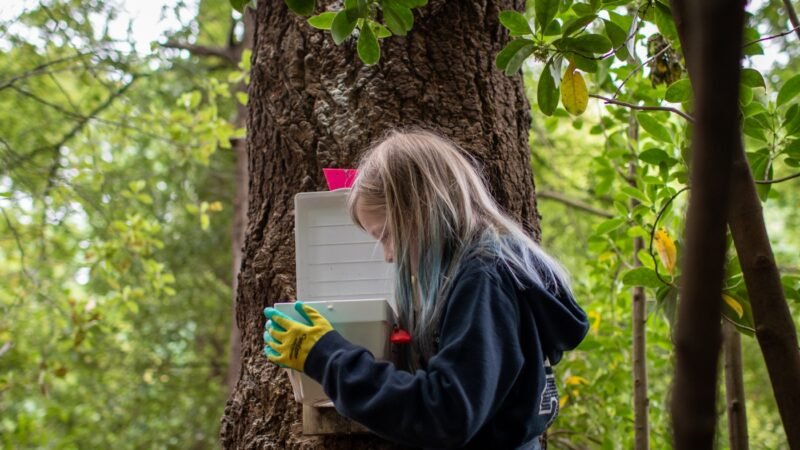Summary Points
-
Youth-Led Conservation: Student volunteers in New Zealand’s Town Belt Kaitiaki are actively engaged in restoring native habitats by planting trees and trapping invasive species threatening local wildlife.
-
Invasive Predator Crisis: New Zealand faces a critical threat from invasive species, with 62 native bird species driven to extinction, prompting a national goal to eradicate such predators by 2050.
-
Community Participation Essential: Achieving a predator-free New Zealand relies heavily on community involvement, as volunteers across the country set traps and foster awareness of conservation efforts.
-
Innovative Solutions Needed: While current trapping methods are evolving, experts note that new technologies, possibly including genetic modifications, may be necessary to fully address the challenge of invasive species and protect native wildlife.
Grassroots Conservation Efforts
New Zealand faces an urgent challenge. Invasive species threaten its unique wildlife, particularly rare bird populations. For context, about 62 native bird species have already gone extinct. Consequently, over 80% of remaining breeding species are at risk. To combat this crisis, the country aims to eradicate invasive predators by 2050. However, this ambitious goal cannot solely rely on government action. Community involvement plays a critical role. Local initiatives, such as the Town Belt Kaitiaki group, show how grassroots efforts can make a difference. Young volunteers practice trapping invasive animals while also restoring habitats by planting native trees. When groups mobilize, even small efforts accumulate to create a wider impact.
Moreover, backyard trappers enhance these conservation strategies. Individuals like James McCarthy deploy traps in their own yards, targeting species like possums and rats. They measure their success in returning bird populations to local gardens. This collective action nurtures a sense of responsibility within communities. Despite some resistance to trapping invasive species, many recognize the ethical necessity of protecting native wildlife. Ultimately, community-driven conservation inspires a powerful movement toward a predator-free New Zealand.
Challenges and Technological Innovations
While conservation efforts show promise, challenges remain. Erasing invasive species entirely poses logistical hurdles. Some experts argue that without new technology, such as more efficient traps, complete eradication may prove elusive. Current traps meet animal welfare standards, emphasizing humane methods, yet they still necessitate oversight and care from the community. Innovations must align with public sentiment. For example, genetic modification to control invasive populations faces resistance and requires thorough public discourse.
Furthermore, balancing conservation goals with public opinion is essential. Many community members, despite supporting conservation, oppose lethal control methods for certain species, such as feral cats. This dichotomy highlights an ongoing debate about ethics in conservation. Nevertheless, engaging the public is crucial, as awareness of endangered species is high. The societal commitment to protect New Zealand’s unique ecosystems may ultimately pave the way for future advances. By fostering collaboration, the next generation can inherit a thriving wildlife population, reinforcing New Zealand’s national identity.
Discover More Technology Insights
Stay informed on the revolutionary breakthroughs in Quantum Computing research.
Discover archived knowledge and digital history on the Internet Archive.
TechV1

